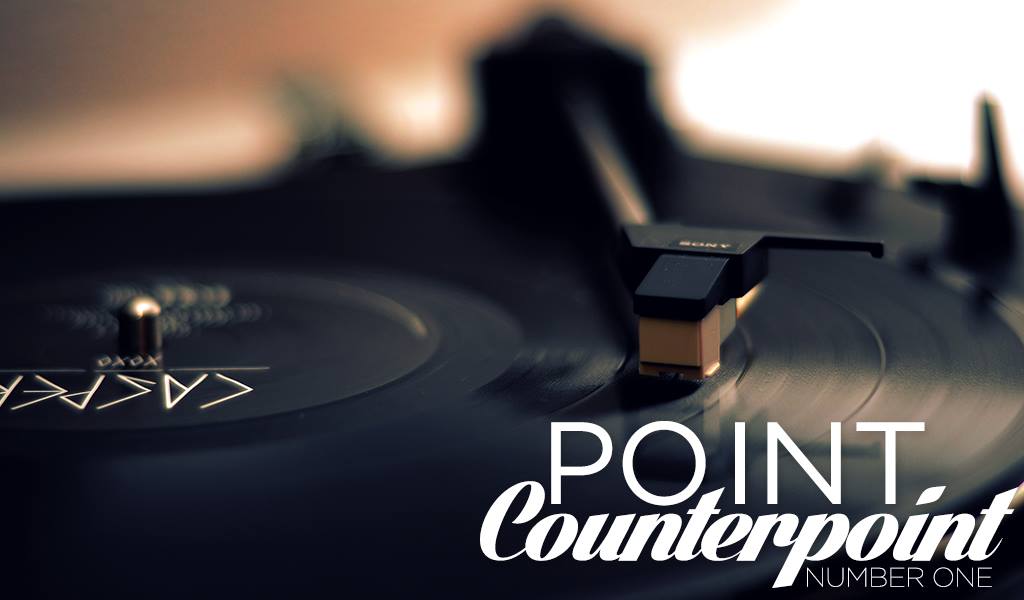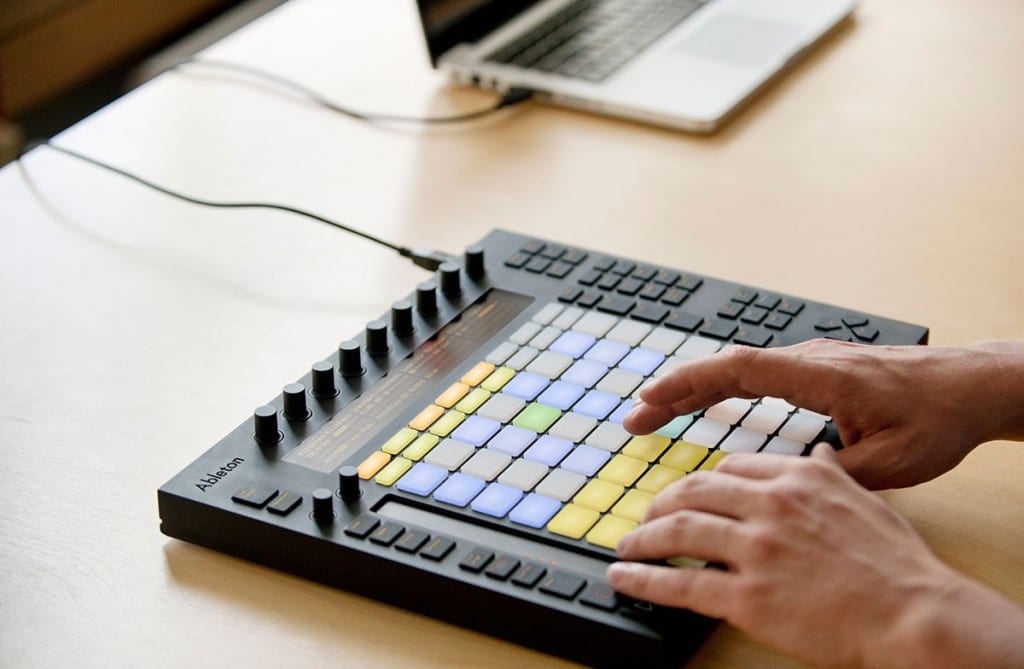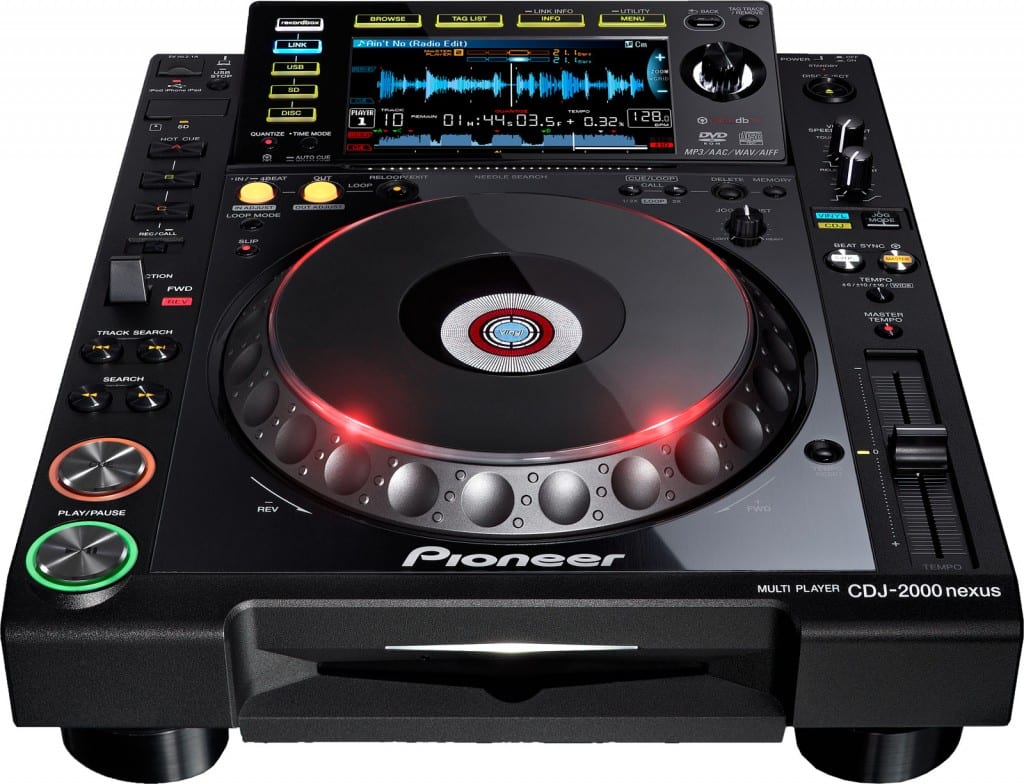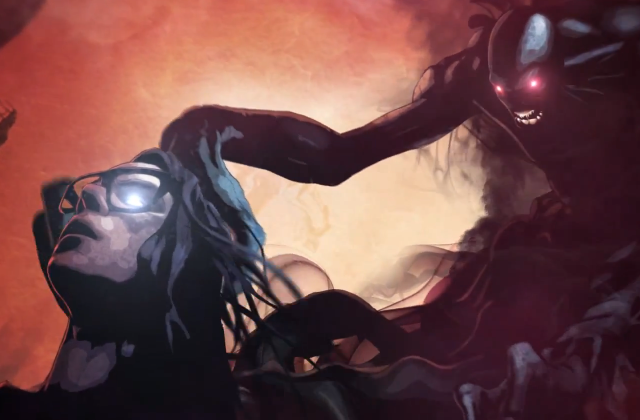This week on Point – Counterpoint Brett Edgerly and Patrick Shannon debate the merits and restrictions of two wildly different methods of performing live EDM – Controllerism vs. Turntablism.
We invite you to join the discussion, read the arguments, voice your opinion, and ultimately vote for your favorite school of DJing. Let’s get right into the debate, check out some examples of each and cast your vote!
Point: Controllerism – Patrick Shannon
Electronic dance music is progressive by nature. Both production and the art of DJing, have grown exponentially due to the advancements and convenience of technology. We are now in the age of the bedroom producer and the high school diploma-less DJ. The internet has given voice to many in the EDM community and it has created a vast laissez-faire marketplace, which allows access to anyone with creativity, originality, and a laptop to get their name out there .
As fans, we are constantly craving the future of EDM. Ever since the bass heavy craze of Dubstep, we gravitate towards events that are hosting the deepest sub-woofers. The competition of the online music marketplace has pushed producers to constantly seek out new and exciting sounds. Every aspect of EDM progresses at the rate of the technology, so why shouldn’t the DJ?
Many in the community are apprehensive to accept a controllerist behind the “decks” because they believe it waters down the creativity and rhythmic skill needed to DJ. Programs like Ableton or Traktor have made it easier to beat-match and have allowed DJ’s to sit behind a desk and do nothing but manually pump up a crowd and simply press play on a new track every two minutes. Controllerism has taken much of the guess work out of DJing the perfect set, but to be clear, this is the sign of a lazy DJ, not the sign of a skill stunting technology.
With no disrespect to the turntablist that can do it all on stage, there are many merits to doing some of the ‘busy work’ when off stage. Not to be confused with the hours of practice and crate digging done by a turntablist, the prep-work done by a controllerist is seen by the focus they are able to give all aspects of their set without having to exude energy on manually beat-matching or scratch juggling. For this I refer to the job of a prep-cook. Their job is to get all of the ingredients prepared up to their furthest state in the recipe right before the dish is to be executed. With the ingredients chopped up, sauces made, and meats cut to portion, the chef simply has to assemble the dishes as a variety of orders come in. It is only because of the behind the scenes work done by the prep cook that the chef can create an array of elaborate dishes.This is not the same as the lunch lady that cooks the meals in advance and slops them on the plate. The lunch lady is the lazy DJ that takes advantage of the technology but does not use those advancements for his or her creative gain. The chef is the DJ that takes advantage of the hours of work done before the performance and utilizes the ingredients in a new and refreshing way.
A perfect example of this lies within the unveiling of Bassnectar’s Ultimate Nerd Server on the Immersive Music Tour this fall. Lorin uses a custom built midi controller similar to Ean Golden’s Midi Fighter. It is a hardware box with many arcade style button, which are used to trigger samples that range from entire beats to simple one shots. The U.N.S. allows Lorin the assign a video clip to each sample in his massive library within Ableton Live. Therefor not only does every set become unique by the selection of samples to fit each moment, but it becomes a unique visual performance as well. No longer does the lighting director have to insinuate where the DJ is going with the set because the DJ can now control all aspects of the performance. This is not possible with a traditional turntable set up.
So, someone is incorporating their light show and their sample library, so what? The strides Lorin, and others are taking with their setup, are at the essence of the enthusiasm behind modern controllerism. The doors are open and waiting to be blown apart. This enthusiasm will not end with CD-J’s or a button filled midi-controller. Right now, in some basement somewhere across the globe, there is a mad scientist developing hardware that will blow the minds of turntabilists and controllerists alike.
By regularly listening to EDM we become jaded to its sound. It is progressive. Compared to every other contemporary genre, it would be considered the future music of robots and flying cars. The EDM community should encourage DJ’s to push their performance to match the dynamic sound and embrace the resources available to them. Controllerism is on the forefront of this ideal and as the great Garth Algar once said, “It’s like a new pair of underwear: At first, it’s constrictive, but after awhile it becomes a part of you.”
Counterpoint: Turntablism – Brett Edgerly
The modern turntable’s origin can be traced back hundreds of years to it’s invention in 1877 by the famous Thomas Edison. While the original ‘phonograph’ as it was called, played music from a cylindrical ‘record’, rather than the pressed flat circular ‘modern’ vinyl record, the working concept remained the same. Essentially, a record is nothing more than a physical copy of a ‘wave form’ which is transcribed into audible sound by contact with a needle or stylus. To be fair, the humble turntable has made relatively few technological leaps in the past century; unless of course you count the jump from vinyl records to compact discs, and then digital audio as big leaps (all of which have happened in the last several decades).
The magic of turntablism however, doesn’t come from technological innovations: fancy velocity sensitive pads, sync buttons, or pre-mapped triggers and samples. Instead, the turntable relies on the human skill of the DJ standing behind them. In the hands of the right person the turntable becomes an instrument in and of itself. Composer John Oswald echoed this notion saying, “A phonograph in the hands of a ‘hiphop/scratch’ [turntablist] artist who plays a record like an electronic washboard with a phonographic needle as a plectrum, produces sounds which are unique and not reproduced—the record player becomes a musical instrument.”
In the purest essence, turntables differ from controllers in the fact that they do not require a ‘filter’ such as a computer and as such require a greater degree of skill and timing. Without a doubt, technological advances such as the ability to see the wave form of the record as with Pioneer‘s ever popular CDJ, have taken a bit of the guess work out, but by and large the need for experience remains. Despite this, the basic use of turntables still requires an ability to beat-match, which refers to the manual syncing of two or more tracks in musically correct time (eg on the 16, 32 or 64 bar loop). This allows turntablist a great deal of flexibility in live mixing, which many would argue exceeds the on the fly capabilities of controllers such as the APC-40, Maschine, or Push that require some pre-programming.
In the hands of capable DJ’s such as A-Trak, DJ Shadow, DJ Q-Bert and DJ Spooky, (just to name an incredibly select few) the turntable becomes an instrument capable of rivaling any controller. While Patrick makes a great point for a controllers potential to sequence much more than just the music, the turnablisit primary focus is of course in the music itself. Ability to mix on the fly and reading the crowd has always been a primary skill of the turntablist DJ.
While the traditional time-code type set up may lack the technology seen in Destroid‘s or Sub Focus‘s live controller based set up, it allows for a pure experience of music between the DJ and audience. Those of you who have seen sets train wreck on CDJ‘s or vinyl understand that this experience may not always be perfect, but at the very least it showcases the human element of live EDM. The turntable has been a staple of the DJ for decades and that’s not going to change anytime soon. At least for this writer, the magic of turntablism is in the minor imperfections that serve to highlight the talent of the DJ before you.
Live EDM is much a journey as it is a performance, with the DJ at the head of their congregation. Turntablism, allows DJ and crowd to immerse one another in the entire experience; a road-trip planned as it is undertaken, turn by turn towards a constantly shifting destination.
Now it’s your turn to add to the discussion, since we can’t cover it all we invite you to share your experiences and thoughts. Be sure to cast your vote below!
@BrettEdgerly and @TheSartoris












Why not both? Insert taco commercial girl here.
As long as it sounds good. The true purists care about the Music and the level of performance. I love my sync button and my S4 and I will put on a good show, the audience won’t care as long as you do.
I’ve been in the middle of this comparison since I got back into music. I used to be a turntablist and DJ eight years ago before I stopped playing music (life and kids happened). I recently got back into music and I’m diving head first into controllerism and love it. There are some aspects that I miss about being behind the decks, but I do see both disciplines learning a thing or two from each other. I catch myself always comparing a technique I do on a controller to what I do on a turntable and mixer (ie, cuepoint juggling, and beat juggling). As long as the music is pure and true that is all that really matters.
Don’t be a lazy bastard. I HATE seeing these DJs today that make Serato do all the work for them and just drink a beer and be a jukebox. Just because the technology makes it easier to do something someone did 10 years ago, don’t stop there. Elevate your craft, passion, and sound.
Great chef and lunch lady analogy. So accurate and true.
I feel like nothing was said about controllers being used as an instrument. People like jeremy ellis, and mold over literally perform live. If their fingers stop, the music stops. triggering clips is cool and all but Im more impressed by an actual live controllerist set. Woo they can control the lights, thats all? What about Live PA? Theres more to djing than just traditional means of playing a set, or launching clips of prerecorded midi info or samples. Last time I checked maschine doesn’t move my fingers or program patches for months at a time.